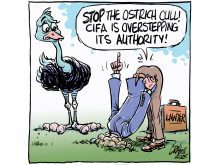EXPERIENCE matters. We can all learn from it. It’s the better part of wisdom.
This is true in our personal lives as well as in larger domains such as rural development. So I was delighted to have the privilege of sharing some of our Canadian experience on that topic recently at a Farmer’s Forum that the International Fund for Agricultural Development held at annual meetings in Rome.
When the members of the United Nations committed themselves to the Millennium Development Goals, they targeted “eradicating extreme poverty and hunger” as their number one goal. This could not be done overnight so they modestly aimed to “halve, between 1990 and 2015, the proportion of people whose income is less than $1 a day and the proportion of people who suffer from hunger.”
Read Also

Budget seen as fairly solid, but worrying cracks appear
The reaction from the agriculture industry to prime minister Mark Carney’s first budget handed down November 4th has been largely positive.
With only a decade left to reach that goal, it is time to assess progress.
According to United Nations statistics, there are approximately1.2 billion people who live in extreme poverty,three quarters of whom are rural people mostly living in so-called developing countries.
They are primarily peasants, small-scale farmers, landless agricultural workers and indigenous peoples whose well-being is connected to agriculture. So any effective strategy to reach the millennium goal of eradicating extreme poverty clearly has to be focused on rural development.
But rural development has already been a favourite target for a great deal of aid and even more expertise.
Despite the billions of dollars and multitude of consultants and projects, rural poverty is deepening in many parts of the world.
Furthermore, the perverse economic indicators are only part of the picture. Water and land quality are deteriorating and land holdings are becoming more concentrated, pushing ever more displaced people into the swelling urban slums.
The conventional development approach articulated at the IFAD meeting continued along the lines we are familiar with: farmers need more technology and inputs to increase productivity, more training to become better managers and marketers and more investment in agriculture.
And, of course, farmers must diversify into higher value crops for export, start value-adding more and gain better access to international markets.
It was a familiar list of strategies. When I spoke to the IFAD participants, I noted that we have pursued all of those strategies vigorously in Canada. We have succeeded in increasing productivity, diversification, intensification and further industrialization of agriculture. We are efficient, competitive, educated farmers. Our trade numbers are brilliant Ñ a five-fold increase in agri-exports over the past 25 years.
But here’s the reality check: during the past 25 years, farm incomes have declined, debt loads have increased and tens of thousands of Canadian farm families have had to leave the land.
Our experience challenges conventional rural development strategies. A genuine commitment to eradicating rural poverty will take some honest, courageous, imaginative rethinking of current models of production, trade and development. That could be an opening for both wisdom and compassion.
Nettie Wiebe is a farmer in the Delisle, Sask., region and a professor of Church and Society at St. Andrews College in Saskatoon. The opinions expressed are not necessarily those of the Western Producer.














